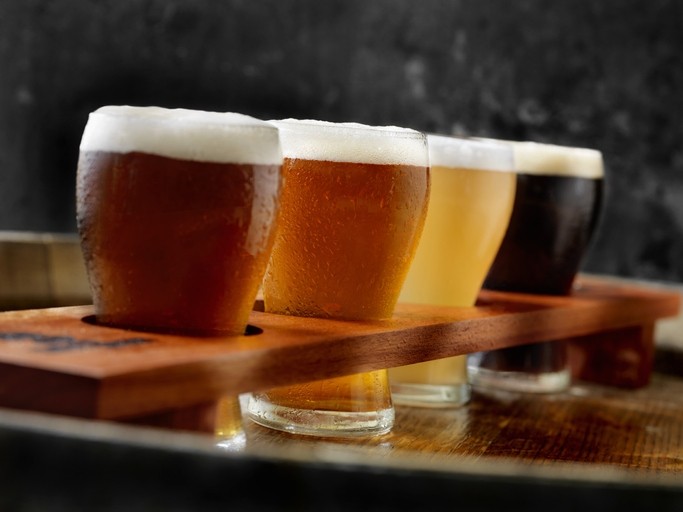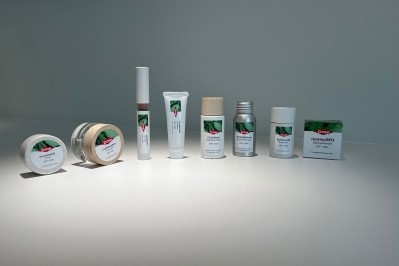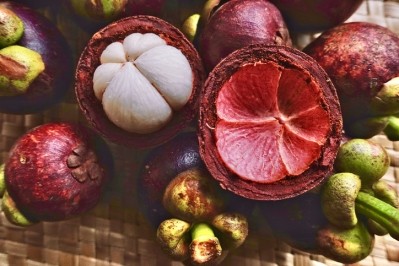Q&A
Stout for the Pout: Full Circle launches beer byproduct skincare ingredient

Can you tell me a little bit about this beer by-product ingredient?
Harry McIlwraith: Barley TONIQ is our newest active. It's derived from the beer brewing process, and it targets irritated or sensitive skin.
When beer is made, barley is harvested, milled, malted and then mashed, which means they put it into a big mixing vessel called a mash tun. They wash it with hot water, which is used to extract all the sugars, which then goes into the fermentation vessel to produce alcohol and turn it into the beer that we know.
What's leftover from that process, though, is the barley grounds, the so-called spent grains. These spent grains have had their sugars extracted, but they still contain a lot of protein. Those spent grains go into another process where enzymes are added and it breaks down that protein into the peptides, polypeptides, amino acids that are relatively well known, and they are the materials that are doing the skin-soothing benefits.
The way that we have shown its efficacy is via this in-vivo study where we looked at the reduction of erythema of the skin. When skin has been irritated you can see a very obvious patch of redness on the skin erythema. We looked at the reduction in that redness over two hours and you can see in only 30 minutes when used to 1% you can see a visible reduction in redness, which builds up to a 23% reduction in redness after two hours when used at 3%.
It's a very fast-acting ingredient and something that we're very happy with.
Where did the concept for this ingredient come from?
Harry McIlwraith: We seem to have unintentionally given ourselves a portfolio of ingredients that have been derived from alcoholic beverages. It's not intentional that we've focused a lot of our portfolio that way. It just has been that especially the alcoholic drinks industry has a lot of waste. We initially started working with a brewery in the UK called Adnams Brewery and we work very closely with them to produce one of our previous materials called Gin TONIQ, which is derived from the gin distilling process.
Subsequently, we work with another brewery that had a lot of waste that we could make use of, and it's just falling into place that way. It hasn't necessarily been intentional so that we can go and have lots of different brewery visits, but that's what does seem to be in the way so far.
What are the pros and cons of working with byproducts from alcohol brewing?
Harry McIlwraith: The biggest pro is that there is a lot of it. As the breweries are working in pretty much sterile conditions, we can be fairly confident that the waste products that we are taking are sterile. In the case of Barley TONIQ, it's coming straight out of the mash tun where it has been washed with 80 degrees Celsius (176 degrees Fahrenheit) water or so, and so we know that is going to be sterile at that point. There are not going to be any microbiological contaminations.
The downsides have been that they have not been particularly located towards us. They are hundreds of miles away, the nearest one. Also, they are producing in such vast quantities that we're only taking a small portion of what they actually produce. It hopefully will get to the point where we are taking a much larger percentage of what they're producing, but at the moment, it's a relatively small amount, so they're not taking us as seriously as maybe they would do if we were taking a large quantity.
Taking a step back from this ingredient specifically, how do you navigate the space of this upcycling trend while maintaining efficacy in ingredients?
Harry McIlwraith: There have been two ways that we've started developing materials.
Initially, it was more what we could get hold of and what we could produce. We have a formal checklist that we go through when we're selecting feedstocks and things like that. As time has gone on, we've had more opportunities to think actually, not necessarily what can we do, but what do we want to do?
We've been quite specific with the feedstocks that we took. We're not just saying “okay, we can upcycle this,” and we've been much more specific about which claims we're aiming for and which molecules are going to give those benefits and subsequently, where are those molecules, which active ingredient within, within a plant feedstock, we can get hold of.
What else is important for beauty professionals to know about this new ingredient?
Harry McIlwraith: In addition to the peptides, polypeptides and amino acids that we mentioned, there are also lots of nice complex carbohydrates that haven't been extracted. There will be moisturization data that will come in the future.
It's also very simple to formulate with.
Aneysha Wakelin: The addition of barley means that we can grow the TONIQ collection of water-soluble actives further. We're looking to expand that range even further. It shows really good efficacy and at low use levels are really good as well. Barley TONIQ has been received really well just because the data is so strong.
A lot of the existing ingredients on the portfolio outside of Barley TONIQ have also been proven to outperform more traditional ingredients that aren't upcycled. We've managed to find and run data that shows us that they actually outperformed standard counterparts, which is really exciting because it just proves that formulators don't need to sacrifice efficacy to be more sustainable.
That's something that we're continuing to prove as time goes on. We're looking at new feedstocks, really identifying what benefits are within those specific feedstocks, and how we can prove that the upcycled ingredients can be super efficacious.
















